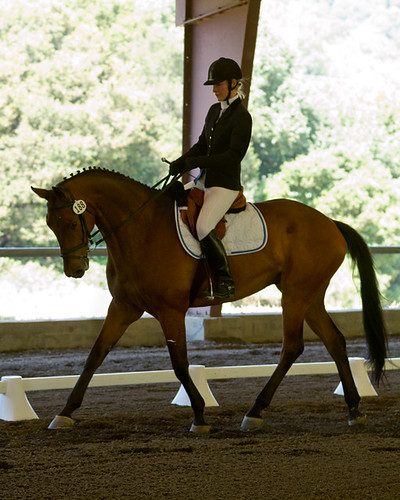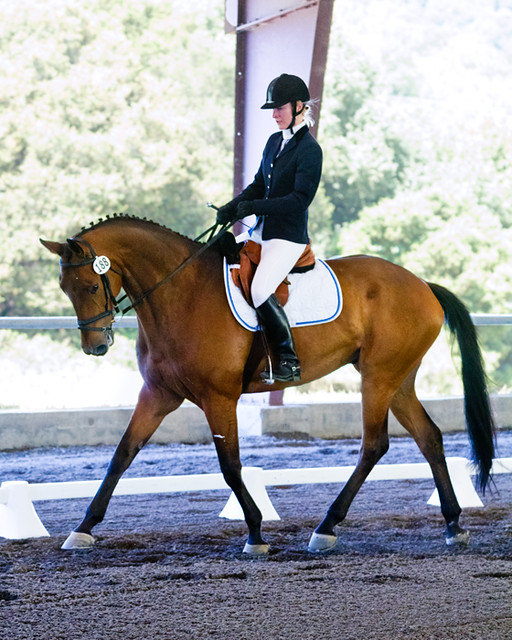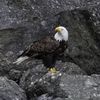Bracketing vs RAW (saving 3-5 exposures -2 to +2 for blending purposes
Dec 5, 2016 08:43:42 #
Ratta wrote:
Has anyone tried saving different exposures from RAW shots for the purpose of blending or HDR? I ask this because using bracketed exposures for blending on a windy day or with moving subjects ain't gonna work. What are the pros and cons of using RAW shots for this purpose?
Thanks
Thanks
Not sure what RAW has to do with your question. As other people have noted, most HDR programs (NIK, Phomatix, etc.) have a process for eliminating/minimizing movement in a bracketed sequence. Those programs ingest RAW, TIF, JPG, or whatever and output TIF, JPG, or whatever.
Dec 5, 2016 08:55:59 #
TheDman wrote:
If Photomatix can do it, then I certainly can in Photoshop.
You can, but you will not be able to do as good a job of it, or it will take you much longer.
Photomatix has clever algorithms to match a selection involving a single frame to the rest of the image in terms of the parameter set in the local tonemapper--compression, microcontrast, smoothing, black and white levels, chroma, luma, etc. The result is basically seamless, with some caveats:
1. If you choose a base frame with blown highlights they will of course remain blown.
2. If you choose a base frame that it too underexposed, the shadows will be seamless in terms of overall look, but the shadow noise will be clearly visible inside the selected areas.
3. If there is movement in the base frame that transects the selection then of course you will see it.
I've asked Photomatix, and they are working on creating a feathering feature for the selection. What I am doing now is to create several different versions taking advantage of the selection matching, and then masking them together in Photoshop. That way I have more control over the selection edge(s). One great thing about Photomatix is that you can do multiple selections and use a different base frame for each. So you can often get pretty close in one go if you have enough brackets. I always shoot my brackets 1 EV apart, which gives me more room to choose base frames.
Here's my record: because everything was moving--the people, the wires, and the stuff hanging--I ended up merging 19 different versions, and this one still has some minor problems.
Dec 5, 2016 09:01:51 #
Ratta wrote:
Has anyone tried saving different exposures from RAW shots for the purpose of blending or HDR? I ask this because using bracketed exposures for blending on a windy day or with moving subjects ain't gonna work. What are the pros and cons of using RAW shots for this purpose?
Thanks
Thanks
May sound to simplistic, but how about a faster shutter even if i means a higher ISO? Actually RAW is the most accurate, you have 14 bits vs 8 to overcome some movement. It's not the answer but many lessen the issues. A lot also depends on quality tool you are using to do the HDR work.
Dec 5, 2016 09:08:21 #
TheDman
Loc: USA
kymarto wrote:
You can, but you will not be able to do as good a ... (show quote)
It would certainly take me longer, but the result would be as good or better and would have the added benefit of not going through Photomatix.
Dec 5, 2016 10:14:02 #
jackpi
Loc: Southwest Ohio
It depends on the dynamic range present in the scene you are photographing. If you can't set your exposure such that you aren't blowing out the highlights and/or shadows(i.e., the dynamic range is too high to be captured in a single exposure), bracketing is necessary. Otherwise, it is a waste of time. If your dynamic range isn't high, why would you need to use HDR.
Dec 5, 2016 10:28:42 #
rmalarz wrote:
As you stated, "...it requires really careful setup...". That's correct. It requires careful metering of the scene. With that done, one carefully done exposure is all that is necessary.
--Bob
--Bob
Only if the dynamic range of the scene falls within the capability of the camera you're using. If the dynamic range of the scene exceeds your camera's range you will need additional exposures to cover the extremes of the illumination.
Note that the dynamic range of a camera generally falls off as the ISO is raised. So if you are operating in limited light and need a higher ISO, bracketing may be necessary to handle the dynamic range of the scene. Generally you might think that high dynamic range in a scene involves bright sunlight so this would be an uncommon situation, but in the case of really low light and high ISO, the dynamic range of the camera can become very limited and even moderate dynamic ranges could require bracketing. See http://www.photonstophotos.net/Charts/PDR.htm (you have to click on your camera model in the list on the right side of the page to see your camera's capability). For example my D5 dynamic range drops to a bit less than 6 ev when I use ISO 12800 (not uncommon for me when shooting dynamic events indoors). The D4 drops to that point around ISO 8000. My old D200 was there at ISO 800.
I consider bracketing a very useful tool.
Dec 5, 2016 10:44:17 #
jwn
Loc: SOUTHEAST GEORGIA USA
I found you must use tripod if using bracketing or in camera HDR (Canon). Old hands are just not that steady. Also don't just use +- bracketing, I have use +1 +3 for some backlit scenes or -- .
Dec 5, 2016 10:56:34 #
jwn wrote:
I found you must use tripod if using bracketing or in camera HDR (Canon). Old hands are just not that steady. Also don't just use +- bracketing, I have use +1 +3 for some backlit scenes or -- .
I find that I can (77 year old) hand hold my camera and do bracketing, but you have to combine the photos in a program that will align the different shots. One limitation you might run up against when hand holding is simply a slight shift in the position of the camera between shots. My camera can do a bracket fairly fast, which will minimize that problem. I set the frame rate as high as it will go and set the camera to do a bracket. Pressing and holding the shutter button will take the bracket in a fraction of a second. When the bracket is finished the camera stops taking shots even if I continue to hold the shutter button down. When I release and press again it will take another bracket.
Dec 5, 2016 11:19:08 #
catchlight..
Loc: Wisconsin USA- Halden Norway
Lightroom has an automatic feature for combining up to 4 exposures in Raw and Photoshop you would stack Raw images. Editing in ether program is normally done in Raw for the best image quality. Bracketing for any reason can be controlled with masking in Photoshop when combining Raw images unless you go for a generated HDR effect in a program like Lightroom. Photoshop will give you endless possibilities with Raw images.
Dec 5, 2016 13:12:01 #
photoman022
Loc: Manchester CT USA
par4fore wrote:
I do this and find it very useful. That said, when possible, I would always bracket.
 me too!
me too!Dec 5, 2016 13:24:28 #
rwilson1942 wrote:
Sounds like you area talking about this: https://www.youtube.com/watch?v=bm-gJbn5aEw&t=38s
Most HDR programs have the ability to eliminate some movement in HRD groups (usually called ghosting) but it can be a problem if there is a lot of it.
Most HDR programs have the ability to eliminate some movement in HRD groups (usually called ghosting) but it can be a problem if there is a lot of it.
The reason I ask this is because there is no way ghosting will be reduced or eliminated when processing bracketed shots of turbulent surf, which is what I was trying to do.
Dec 5, 2016 13:26:37 #
TheDman
Loc: USA
Ratta wrote:
The reason I ask this is because there is no way ghosting will be reduced or eliminated when processing bracketed shots of turbulent surf, which is what I was trying to do.
You use one exposure for the turbulent surf and combine the rest as you otherwise would.
Dec 5, 2016 14:09:20 #
amfoto1
Loc: San Jose, Calif. USA
DirtFarmer wrote:
O...If the dynamic range of the scene exceeds your camera's range you will need additional exposures to cover the extremes of the illumination....
Not true. It can be done with a single image, too.
Granted, it's better when you can do bracketed shots in-camera. But that simply isn't possible a lot of the time.
Here's how. First, I always shoot RAW, regardless, but I'd definitely make a point of doing so if planning to use this technique. RAW files have more latitude for the adjustments that will be needed to exposure, and possibly white balance as well.
On http://www.uglyhedgehog.com/t-427140-1.html "Multiple Exposure" thread today I gave the following examples, both involving exactly what the OP is concerned about... moving subjects.
*****************************************
...sometimes HDR techniques are needed to overcome challenging lighting conditions. There are at least two possible ways to do it in post-processing: Take two or more images and combine them (either manually or using software, such as Photoshop's File > Automate > Photo Merge to HDR). This can work well, so long as your subject is completely stationary.
However, my subjects are typically moving and I don't have the luxury of bracketing multiple exposures. So instead I shoot RAW and multi-process a single image.
For example here I adjusted one version of the RAW file for color balance and exposure of the brighter, outdoor background, and then adjusted a second version for proper exposure and color balance of the subjects themselves, which were in a heavily shaded area. Then I manually combined the "correct" portions from each image into a single image (using Photoshop Layers & Masks), to give the result shown on the right.



The original capture used above was exposed as best possible for the subject, so even after tweaking it this way the background is still partially blown... but that's fine by me. I was just looking to recover the background partially and to color correct it.
Here's another example, except this time it's strong, full sun and I was only able to shoot the "shadow" side of the subject. First I did similar, creating three different versions from a single image: one that was adjsuted slightly under-exposed to retain highlight detail, another with exposure set for the mid-tones, and a third that was adjusted to be slightly over-exposed to open up the shadows. But in this case I used Photoshop's HDR feature to automatically combine the three versions into a single image. It would have been very difficult to combine the versions of this image manually with layers and masks.




The end results in both cases above weren't done to exaggerate the way HDR is often used, but instead used it just to correct for short-comings of any camera, to extend the dynamic range of the final image to cover more what we naturally see with our eyes. In other words, the goal was to make the final image look even more natural, not super-natural. Both the above appear slightly over-saturated here because they were headed for printing with a process that tends to come out slightly under-saturated.
******************
So, instead of bracketing a series of shots in-camera... which is impossible when your subject isn't completely and perfectly stationary... I make a series of differently adjusted (i.e., "bracketed") conversions from a single RAW file.
Lightroom makes this quite easy, with its "virtual copy" feature. That allows you to easily set up two or more versions of any single image. You can even batch convert them to send to another post-processing software for additional work. (Another s'ware is needed because Lightroom doesn't provide layers and masks or have an automated way of handling HDR processes. Personally I use Photoshop, but similar can be done in Elements and various other s'ware.)
Dec 5, 2016 14:22:14 #
catchlight..
Loc: Wisconsin USA- Halden Norway
Use Photoshop with masks and don't combine everything. Paint out unwanted area's and reveal things you want to show from layers. I think you should look photo shop tutorials up on youtube...everything combined is more of an HDR thing that works good with focused sharp images that don't move...
Dec 5, 2016 16:19:42 #
TheDman wrote:
You use one exposure for the turbulent surf and combine the rest as you otherwise would.
Thanks! That was a lightbulb that didn't go off :)
If you want to reply, then register here. Registration is free and your account is created instantly, so you can post right away.




